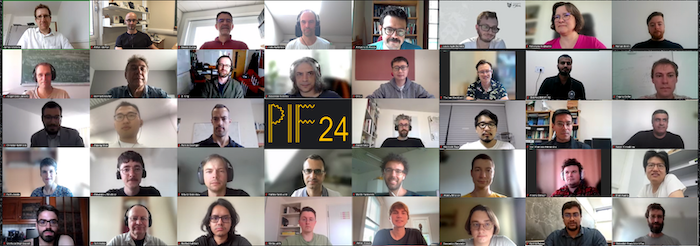Physics in Intense Fields (PIF24)
Zoom
Overview
Physics in intense, or strong, background fields has a rich history, captivating researchers since the early days of QFT. Modern advances in high-intensity lasers have prompted a renewed interest in the area of strong-field QED (SFQED), where non-perturbative methods have been necessitated by increased laser field strength. "Physics in Intense Fields" aims to explore SFQED, high-intensity laser physics, and related themes, by bringing together researchers from theory, experiment, and simulation.
PIF24 is hosted online jointly by University of Plymouth and University of Edinburgh, and is preceded by earlier Physics in Intense Fields conferences:
- PIF22 (virtual) (hosted by the University of Plymouth),
- PIF2013 in DESY, Germany in 2013,
- PIF2010 in KEK, Japan in 2010.
We especially encourage participation and contributions from early career researchers. The first session of the conference will be devoted to tutorials on the three pillars of SFQED: Theory, Simulation and Experiment. These tutorials are aimed at Master's / PhD students who are relatively new to this area of research.
Format
Venue: This year, the conference will be held entirely online via Zoom. Zoom links will be sent directly to registered participants shortly before the conference begins.
There is no registration fee for attendance.
Message Board: Zulip will be used for discussions amongst participants and speakers. The link will be provided to registered participants.
Confirmed Speakers
- Tom Blackburn (Tutorial talk), University of Gothenburg, Sweden
- Sergei Bulanov (Overview talk), ELI Beamlines, Czech Republic
- Antonino Di Piazza (Overview talk), University of Rochester, USA
- Gerald Dunne (Overview talk), University of Connecticut, USA
- Ruth Jacobs (Overview talk), DESY, Germany
- Sebastian Meuren (Tutorial talk), SLAC, USA
- Daniel Seipt (Tutorial talk), Helmholtz-Institut Jena, Germany
- Henri Vincenti (Overview talk), Université Paris-Saclay, France
Organizers
Local Organizing Committee
- Patrick Copinger, University of Plymouth, UK
- James P. Edwards, University of Plymouth, UK
- Anton Ilderton, University of Edinburgh, UK
- Ben King, University of Plymouth, UK
- Karthik Rajeev, University of Edinburgh, UK
International Advisory Committee
- Laura Corner, University of Liverpool, UK
- Tom Heinzl, University of Plymouth, UK
- Holger Gies, Friedrich Schiller University Jena, Germany
- Sang Pyo Kim, Kunsan National University, Korea
- Stuart Mangles, Imperial College London, UK
- Mattias Marklund, University of Gothenburg, Sweden
- Caterina Riconda, Sorbonne Université, France
- Christopher Ridgers, University of York, UK
Conference Photo

